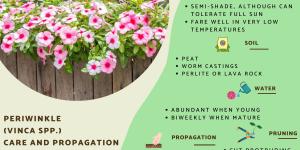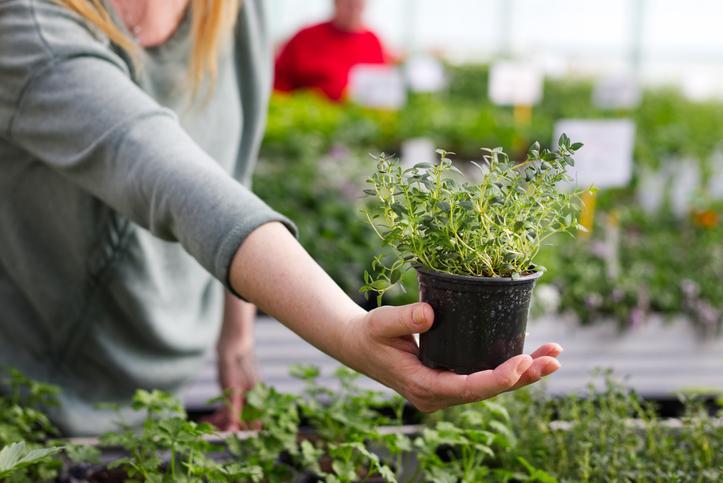Caring for Different Types of Thyme Plants


When we talk about the plant known as thyme, we are referring to plants from the genus Thymus. Not all plants from this genus are known as thyme, only those which are used as herbs or ornamental plants. While we most likely know thyme for its leafy stalks used to flavor various culinary dishes, many of the different types of thyme plants are notable for their beautiful flowers. Thymus contains between 200 and 300 species of plants in the Lamiaceae family. They are herbs and subshrubs from the temperate climate zones of Europe, Asia and North Africa and it is one of the most used herbs throughout history for many reasons.
In this thedailyECO article, we are going to look at some of the most common species of thyme. We also provide practical care tips on caring for all different types of thyme plants.
Different types of thyme plants
The best known and used members of the thyme family are as types of aromatic plants, widely used for their culinary properties in kitchens around the world. The most common species are 15 to 40 cm (6 to 16") tall, with tough, woody branches and small leaves.
In addition to their practical uses, they are also highly valued for their aesthetic value. They bloom at the end of spring and give beautiful flowers in shades of white, pink and purple. What perhaps stands out the most about this plant is its characteristic aroma, since it is an iconic element of its native homelands of the Mediterranean, North Africa and Asia.
Different types of thyme plants
As we have already stated, there is a large variety of thyme species within the genus Thymus. Below, we look at some of the most common:
- Common thyme (Thymus vulgaris): this is by far the best known and most common species of thyme. It can grow up to 16" and is especially aromatic. It is commonly used as a seasoning for various types of dishes.
- Lemon thyme (Thymus citriodorus): also called lemon thyme, this species is characterized by its very pleasant and refreshing citrus smell. It is also used as groundcover in various gardens to protect soil.
- Breckland thyme (Thymus serpyllum): also known as wild thyme or elfin thyme, this species grows in northern and central Europe, in valleys and mountains where Thymus vulgaris does not grow. This type of thyme is used in traditional medicine for its apparent antitussive properties.
- Broad-leaved thyme (Thymus pulegioides): this is a serpol-like type of thyme that grows virtually all throughout Europe.
- Creeping thyme (Thymus adamovicii): this species of thyme is one of the smallest and does not usually exceed 4" in height. It is native to the Balkans. Like many other types, it is mainly used to prepare aromatic essences.
- Alicante thyme (Thymus moroderi): the Alicante or Murcian lavender thyme is an endemic species of the coastal areas of these two regions. It is also a protected species, since the liquor called Cantueso is made with it.

How to care for thyme plants
Thyme is a very strong plant that requires relatively little care. However, as always, we will need to provide the right conditions for its growth as it does have a tendency to rot when placed improperly or left unattended. This is why we provide some of the fundamental guidelines when caring for thyme plants:
- The right climate: thyme is a plant highly adapted to the dry temperate Mediterranean climate, which is why it withstands drought very well and requires little watering. When you water your thyme, always try not to create puddles the soil or make it too wet. As with most plants of this type, it will rot from excess moisture.
- Diseases: thyme plants are also very resistant against pests and diseases, so the only thing that is likely to affect it are fungi in cases where it suffers excess humidity.
- Substrates and fertilizers: with the above factors taken into consideration, when you plant your thyme in a pot, prepare a well-drained substrate with a base of sand or gravel at the bottom. You can provide some basic or homemade compost every two or three weeks in summer if you want to help it in the harsher months. If you live in a cold climate, do not use one rich in nitrogen or minerals, as they would make the plant weaker against frost.
Check out our related article to learn more about how to make your own fertilizer at home. - Sun exposure: your thyme will also appreciate direct exposure to the sun. Far from damaging it, will strengthen it since it is a plant used to warm climes. This is true of all types of thyme plants.

Medicinal properties of thyme and its benefits
Thyme has been used in various cultures for traditional medicines. They are often made into essential oils and their properties are boasted by alternate medicine practitioners for a range of ailments. Unfortunately, some of these claims are dubious or lacking in scientific research to support them. However, when used as supportive treatments, they are believed to have some value for the following treatments:
- Antiseptic: thyme contains thymol, a phenol which has been linked to various antimicrobial properties. It may be used to treat minor superficial wounds or infections like conjunctivitis when used as a mouthwash[1].
- Antifungal: it was previously widely used in medicine to treat certain types of ringworm, although its efficacy is not as good as other products developed since this time.
- Anti-inflammatory: has been used to treat colds as it has some antimicrobial and anti-inflammatory effect[2].
It is important to note these treatments are not replacements for addressing medical issues. They should only be used as supportive therapies and only under strict guidelines from a qualified doctor.

Why dis my thyme plant dry up?
There are three main reasons why thyme dries up and they all revolve around issues with dehydration. Below we explain these risks in more detail:
- Too much sun: if your thyme receives a lot of direct sun for long hours, it can dry out if the temperatures are too hot. As we have said, it is a plant with a Mediterranean climate, so sometimes an excess of sun could damage it. If you see this happen, the best thing you can do is move it to another location so that it also gets some time in the shade.
- Lack of water: although we need to avoid oversaturation, thyme can dry out due to lack of water. Once again, we run into the problem of dehydration, so if you think that you have not watered your plant enough, we recommend that you do it more frequently so that it can continue to develop strong.
- Aphid pests: there are several types of aphids that can infest both indoor and outdoor plants. Broadly speaking, what these insects do is suck the sap from the plants and, consequently, cause them to dry out.
If you want to learn about other plants we use in the kitchen and how to care for them, check out our articles on the different types of rosemary plants and how to stop rosemary from drying out.
If you want to read similar articles to Caring for Different Types of Thyme Plants, we recommend you visit our Plant care and cultivation category.
1. Sienkiewicz, M., Łysakowska, M., Ciećwierz, J., Denys, P., & Kowalczyk, E. (2011). Antibacterial activity of thyme and lavender essential oils. Medicinal chemistry (Shariqah (United Arab Emirates)), 7(6), 674–689. https://doi.org/10.2174/157340611797928488
2. Lorenzo, J. M., Mousavi Khaneghah, A., Gavahian, M., Marszałek, K., Eş, I., Munekata, P. E. S., Ferreira, I. C. F. R., & Barba, F. J. (2019). Understanding the potential benefits of thyme and its derived products for food industry and consumer health: From extraction of value-added compounds to the evaluation of bioaccessibility, bioavailability, anti-inflammatory, and antimicrobial activities. Critical reviews in food science and nutrition, 59(18), 2879–2895.
https://doi.org/10.1080/10408398.2018.1477730







